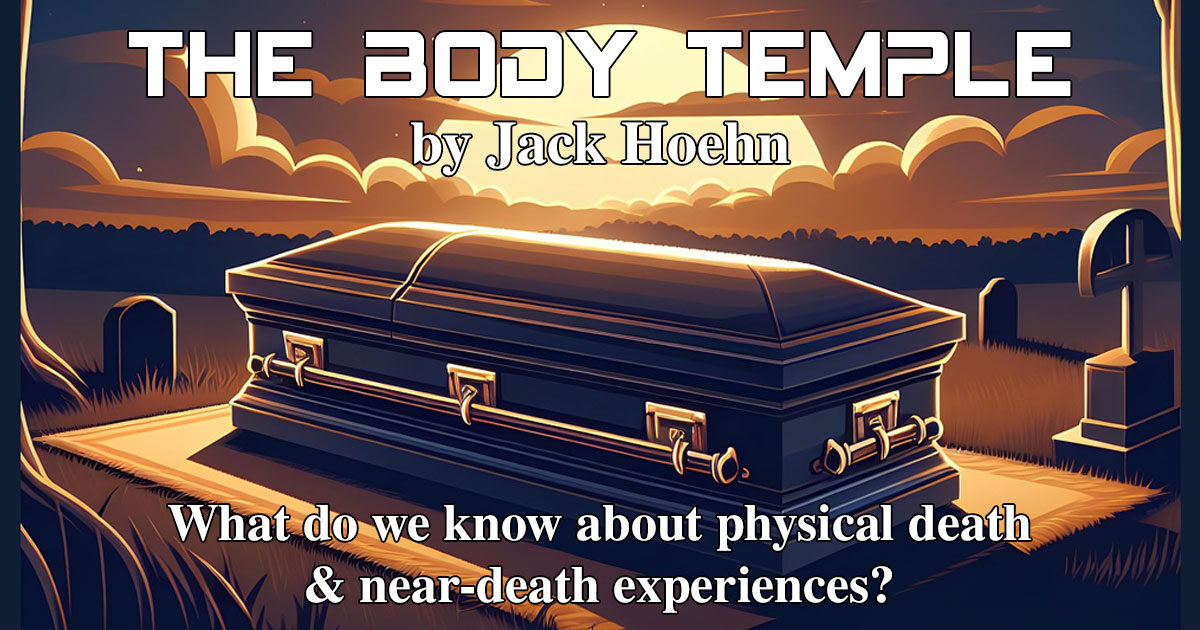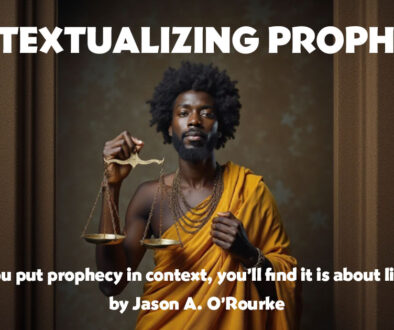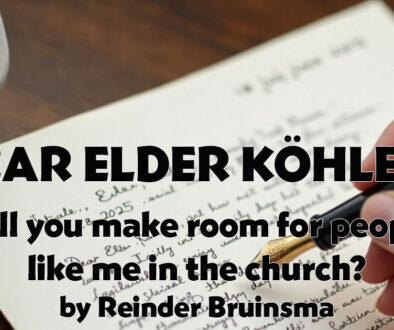Death’s Sting: What do we know about death and near-death experiences?
“Love doesn’t die with death. Love is like liquid; when it pours out, it seeps into others’ lives. Love changes form and shape. Love gets into everything. Love wins every single time. Love wins by lasting through death. Love wins by loving more, loving again, loving without fear. ― Kate O’Neill
by Jack Hoehn
 There are many memorable quotations about death that I could have started this commentary with. Kate O’Neill’s “Love wins” passage appeals to my hope.[1]
There are many memorable quotations about death that I could have started this commentary with. Kate O’Neill’s “Love wins” passage appeals to my hope.[1]
Apoptosis: the programmed death
Some death is necessary. I refer to programmed cell death, or apoptosis, which is part of the intelligent design of life. Every cell has a death function. This is not necrosis death caused by invasion, disease, trauma, or damage but a programmed function of life where gracefully, painlessly, and obediently a cell recycles to be born again, refreshed, renewed, young and capable once more for its function in its community of cells.
New cells are constantly being made in the body. Problems occur if old cells don’t die when expected, to allow the new cells to take over. Cancer, for example, is what happens when older cells refuse to undergo apoptosis when they should.
Healthy babies require cell death during normal pregnancies: the cells between the webbed fetal hands must die if the baby is to be born with fingers on their hands. After programmed cell death the body can recycle the dead cell’s components to nourish and rebuild new cells—not unlike how we compost plant scraps to nourish next year’s garden. Some kinds of death are a form of intelligently designed recycling.
Necrosis: the undesigned death
Recognizing intelligently designed programmed death is not to say that “death is your friend.” I could just as well have started this article quoting lines from William Earnest Henley’s poem, “Invictus”:
“Out of the night that covers me,
Black as the Pit from pole to pole…
Beyond this place of wrath and tears
Looms but the Horror of the shade…”
Nelson Mandela did not memorize this poem for these dark lines, but for the heroic last stanza,
“It matters not how strait the gate,
How charged with punishments the scroll,
I am the master of my fate:
I am the captain of my soul.”[2]
Necrosis is the undesigned, unwelcome, unexpected, unnecessary cell death from trauma, toxin, pathogen, starvation, or asphyxia that puts those we love and us into the pit, and leaves us with a “horror of the shade.”
William Henley’s bravery was not easy literary fiction: his body suffered necrosis from tuberculosis of the bone at age 12 that required amputation of his left leg. Later in life he spent much time in a hospital when his right foot also became diseased. His only daughter, Margaret, died at age 5. He died at age 53 after falling from a train. His one-legged status made him a model for his friend Robert Lewis Stevenson’s Long John Silver, the one-legged pirate in Treasure Island.
The science of death
The Creator’s pronouncement was that eternal life was not good for fallen humans. “[They] must not reach out, take from the tree of life, eat, and live forever” (Genesis 3:22). Our cells are now not only managed by apoptosis but also subject to death by necrosis. The Son of God, however, reframed death as a long “sleep,” and offers a promise of bodily resurrection as a remedy for the black pit and horrors of the shade. The denial of an “ever-burning hell of punishment” and the affirmation of a bodily resurrection after unconscious sleep was a powerful enough doctrine to baptize a friend of mine from Catholicism into Adventism. (He remained unconvinced of other Adventist ideas like young earth, vegetarian diet, and anything beyond historical interest in 1844.)
Atheists dismiss religion as wishful thinking invented to palliate the reality of eternal death. But many humans, regardless of religion, and often with little religious symbolism, experience near-death as a life-affirming experience that they report to both family and impartial observers. But there are scientists who study death as well as scientists studying life. Chris Kerr, MD, is a palliative care specialist whose career has been to care for the dying. It was only after 40 years of practice that he first spoke in public about what he had been seeing over and over again with his patients.
“When I was present at the bedside of the dying, I was confronted by what I had seen and tried so hard to forget from my childhood. I saw dying patients reaching and calling out to mothers, and to fathers, and to children, many of whom hadn’t been seen for many years. But what was remarkable was so many of them looked at peace.” [3]
Recognizable humans long before Moses or a Bible from Neanderthal caves to Cro-Magnon graves show provisions for an afterlife, including weapons, food, and goddess statues for a happy sojourn in the grave or a safe voyage to other worlds. Gilgamesh in Babylonian and Assyrian epics goes wild with grief when his friend Enkidu dies and journeys to meet the pre-Biblical Noah (called Utnapishtim), who tells him of a life tree that will restore his youth, but a serpent steals it from him while he is bathing.[4]
In medieval narratives the gatekeeper was Christ, the Virgin Mary, or an angel.
Modern accounts of near-death experiences often include “entering the light” and include family members departed either welcoming the about-to-die or sending them back to life. In medieval narratives the gatekeeper was Christ, the Virgin Mary, or an angel. Modern accounts don’t need the intercession of a spiritual authority; usually it is a known family member or a direct contact with God. Those close to death are known to complain after revival, “Why did you bring me back, Doctor? It was so beautiful!” or “Why did you bring me back to life when I was doing so well with God?”[5]
Those who come back from a near-death experience seem reliably changed. A woman named Helen Nelson says she seemed changed, not only to her children but even to strangers.
“We would go out to the shopping center; I’d be walking and people would stop me, total strangers, and they’d say, “Who are you?” And I’d say, “Well, why?” And they’d say, “You have this big light around you.” And I’d say, “Well I just had a very unusual experience. Maybe that’s what it is.”[6]
The state of the near-dying
This is the 20th article I have written showing that science can open opportunities for believers to worship the intelligent design and wonders in human anatomy and function. The scientific study of death and near-death experiences independent of doctrines notes both the intelligently designed programmed death (apoptosis) in cells, and the destructive necrotic death of cells and organisms. Scientific observation extends beyond measurement of cells to the evidence reported by humans of near-death experiences—so what then should believers learn from thanatology, the scientific study of death?
I write convinced that good and evil, justice and injustice are moral and ethical realities. I can see now and in history humans who have chosen to do good and some who have chosen to do evil—that some humans act justly with fairness and truth and some act unjustly with greed and dishonesty. I also accept the doctrines of death as “unconscious sleep” (Jesus’ term) that should end with a future “bodily resurrection” (Jesus’ explicit promise). Yet recognizing those ethical judgments, the resonant KJV (King James Version) Bible states something amazing:
“Your Father in heaven…maketh the sun to rise on the evil and the good, and sendeth rain on the just and the unjust” (Matthew 5:45).
In other words, God’s goodness and generosity is independent of morality! God is good to all regardless of religion or not, doctrine or not, or ethics or not. God is good regardless of what we are. God is good to all in anatomy and physiology; in chemistry and physics; in respiration and perspiration; in taste and smell and hearing and touch; in sex and in birth. Should it surprise me to find that God is good to all in death?—that for everyone, regardless of being “just” or “unjust”, “good” or “evil,” Jesus and his Father will always be good. It appears to me that the scientific study of death and near death is no contradiction to Bible’s presentation of the Heavenly Father’s invariable goodness, kindness, mercy.
Deathbed visions seem real and provide comfort, even heal
It appears that the Intelligent Design of life includes generic human experiences, across all belief systems,
“of deathbed visions (that) are real, can provide comfort, even heal past trauma. That they can, in some cases, feel transcendent. That our minds are capable of conjuring images that help us, at the end, make sense of our lives…. Regardless of the subject matter, the visions, patients say, feel real and entirely unique compared with anything else they’ve ever experienced. They can begin days, even weeks, before death. Most significant, as people near the end of their lives, the frequency of visions increases, further centering on deceased people or pets. It is these final visions that provide patients, and their loved ones, with profound meaning and solace.”[7]
Jesus reminded his disciples that “planned death” was part of creation, as his impending death was part of God’s plan. “Truly, truly, I say to you, unless a grain of wheat falls into the earth and dies, it remains alone; but if it dies, it bears much fruit.” (John 12:24). Should Christian religions then feel obliged to treat these generic extra-religious phenomena as “demonic” or “evil”?
Why not find in them evidences of the Creator’s graciousness, loving-kindness, and unbounded mercy? If all must die a first death, how kind it would be to have a mechanism for facing this last-sleep available to all humans—culture- and belief-independent. As a Seventh-day Adventist worshiping a kind and generous God, I can’t find these comforting reports from the study of generic near-death experiences as demonic, or satanic. It doesn’t change my belief in a first death as unconscious sleep, nor hope in a resurrection at the end of time, nor the firm denial of the demonic doctrine of “an ever burning hell.“
And what about those other Adventist opinions about a millennium, a second resurrection, or a second death? Rather than argue over speculations at what comes next, I’m happy to just wait and see. What I am learning is that it seems that God in mercy offers to all some comfort at the first death—this encourages me to believe, based on the evidence we do have, that whatever must happen next will also be equally merciful and infinitely just.
Was Jesus joking?
One of his biographers quotes Jesus of Nazareth as telling what could be a cosmic joke or even a cruel lie–”Whoever believes in me will never die!” (John 11:26). Well, guess what: millions believed in you, and all so far have died. In context, that statement seems a harsh thing to ask girls who have just buried their brother to believe. What is this young teacher, this healer who was in no hurry to rush with a remedy to his friend’s side, now asking Martha and Mary at the graveside to believe? Oh God, Martha must have thought, Oh God—Lazarus was so sick, Lazarus was suffering, Lazarus is dead. And now, Jesus, how dare you ask us to believe? Mary, come put some sense into this man! It’s been four days. This is too much! It stinks!
The Bible story, of course, removes with a resurrection miracle the tears of both the girls and Jesus himself, but then leads to his crucifixion a short time later. If Lazarus were still alive in Jerusalem today, we could stop arguing about religions and beliefs. We could just get on a plane, pass the Israeli security checks, land before a Hezbollah missal strikes and drive up from Tel Aviv airport to the outskirts of Jerusalem and meet Lazarus—the world’s oldest living man—and not need to believe. We could have evidence for eternal life.
But Lazarus died again, even if you believe he was resurrected once upon a time. So, what is the point; how do believers dare claim eternal life when even their miracles are temporary and the resurrected die again? Because believers get the joke—surprise! Death is not “death”; it is just a dreamless sleep!
Apoptosis, planned death followed by renewed life is the designed plan. Necrosis is the cruel hoax. This dark tunnel every creature passes, this last sleep, starless night, “black as the pit from pole to pole,” stinks indeed. But we will not call liars those who claim to have seen there does appear to be a light at the end of death’s tunnel. Kate is right: “Love doesn’t die with death…. Love wins by lasting through death. Love wins by loving more, loving again, loving without fear.”
Those who laugh last may indeed laugh best.
To comment, click/tap here.
The photograph of a grieving Palestinian mother is the World Press Photo of the Year, Mohammed Salem, Reuters.
[1] Kate O’Neill, Surviving Death: What Loss Taught Me about Love, Joy, and Meaning (2015).
[2] William Earnest Henley. Invictus.
[3] Phoebe Zerwick, “What Deathbed Visions Teach Us About Living,” New York Times Magazine, March 12, 2024.
[4] Carol Zaleski, Otherworld Journeys—Accounts of Near-Death Experiences in Medieval and Modern Times, Oxford University Press (1987), page 15.
[5] Ibid, page 137.
[6] Ibid, page 141.
[7] Phoebe Zerwick, Op. cit.
[This is #20 in a series on worship guided by science.(#1 is here) Jack is also known as Dr. John B. Hoehn, MD (Loma Linda University), CCFP (Canada), DTM&H (London). Member AAFP (USA)
 Jack’s book Adventist Tomorrow—Fresh Ideas While Waiting for Jesus in its second edition continues to be the most popular book Adventist Today has published.
Jack’s book Adventist Tomorrow—Fresh Ideas While Waiting for Jesus in its second edition continues to be the most popular book Adventist Today has published.
It includes chapters on The Sanctuary Doctrine, Satan, Ellen White in Her Times, Honest with the Bible, The Openness of God, Who Are the Remnant?, Who Shall Be Saved?.
Review and refresh your Adventism. Could be a great book for a Sabbath School class to discuss selected chapters together.
Gift it to your children, pastors, elders, teachers.
 Jack’s wife, Deanne, wrote as a young nurse and mother stories now published in a delightful new book called Loving You—I Went to Africa. This is not a memoir, because it was written as it happened during their 13 years as medical missionaries in Lesotho and Zambia. It shows an honest and accurate history of those tumultuous times in African history through a young woman’s eyes.
Jack’s wife, Deanne, wrote as a young nurse and mother stories now published in a delightful new book called Loving You—I Went to Africa. This is not a memoir, because it was written as it happened during their 13 years as medical missionaries in Lesotho and Zambia. It shows an honest and accurate history of those tumultuous times in African history through a young woman’s eyes.
Readers say: “What a beautiful story. Completely drew me in….” “Great storytelling, great read, hard to put down….”
“I wanted to read all day and yet didn’t want the story to end….” “What a treasure….”
These books and others are available at SHOP in the menu at the top of the page. All sales go to support Adventist Today.]




